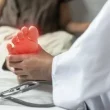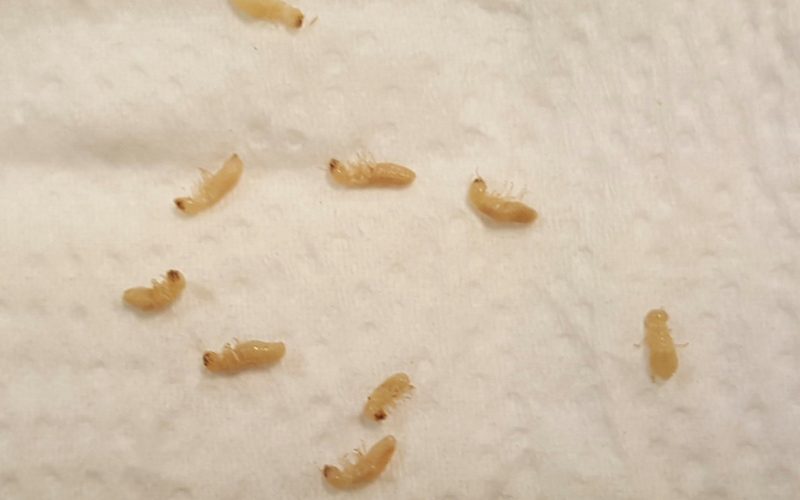Introduction
Homeownership comes with many responsibilities, and one of the most daunting is defending your property against destructive pests like termites. While most people know what adult termites look like, very few recognize baby termites, also known as termite nymphs. This lack of awareness can be a costly mistake, as early detection is the key to preventing serious structural damage. Understanding what do baby termites look like is your first line of defense in protecting your biggest investment—your home.
Baby termites are the silent destroyers you may never see until it’s too late. But how exactly can you spot these tiny pests before they multiply and cause thousands of dollars in damage? In this article, we’ll cover everything you need to know: what baby termites look like, where to find them, signs of an infestation, and why acting quickly is critical.
What Are Baby Termites?
Baby termites, or termite nymphs, are the earliest developmental stage of termites after they hatch from eggs. Depending on the species, termite eggs hatch in just a few weeks, releasing tiny, translucent larvae. These nymphs are white to cream-colored and can be almost see-through, making them hard to notice without a careful inspection.
Unlike baby cockroaches or ants, termite nymphs don’t look like miniature versions of the adults you might recognize. Instead, they resemble small, soft-bodied worms with six tiny legs and straight antennae. Their bodies are often only 1–2 mm long at first, and they can blend seamlessly with wood or soil, making them easy to overlook.
Why Should You Worry About Baby Termites?
Some homeowners think that baby termites aren’t a big deal because they’re small. Unfortunately, this misconception can lead to major problems. Baby termites quickly grow into worker termites—the ones responsible for consuming wood 24/7. A single termite colony can contain thousands to millions of individuals, each capable of causing incremental but devastating damage.
In just a matter of months, an undetected infestation can weaken your home’s beams, floorboards, and even foundation. Repair costs can easily run into the tens of thousands of dollars. The sooner you identify baby termites, the better your chances of stopping the colony before it matures into a full-blown infestation.
The Appearance of Baby Termites
Identifying baby termites requires a keen eye. Here are the defining characteristics of termite nymphs:
- Color: Baby termites are white or pale cream in color. Their translucence makes them blend in with wood or soil.
- Size: They’re extremely small—barely 1–2 mm when first hatched, growing larger as they molt.
- Body Shape: Baby termites have soft, elongated bodies with no defined waist (unlike ants).
- Legs: Six tiny legs attached near the head.
- Antennae: Straight and bead-like, not bent like an ant’s.
- Wings: They don’t have wings until they molt several times and become alates (swarmers).
Many people mistake baby termites for maggots or small white ants, but the straight antennae and lack of segmented waists are key identifiers.
Where Are Baby Termites Found?
Termite nymphs spend almost all their time hidden inside walls, floors, or underground nests. Here are the most common locations you might find them:
- Under wooden floors: Especially near moisture-prone areas like bathrooms or basements.
- Inside walls: Hollow-sounding wood, bubbling paint, or pinpoint holes are signs to look closer.
- Near wooden structures outside: Decks, sheds, or tree stumps are prime locations.
- Crawl spaces and foundations: These damp, dark areas provide ideal conditions for a termite colony.
- Mud tubes: If you see pencil-sized mud tunnels along walls or foundations, it means termites are active nearby—and their babies are inside.
Early Signs of Baby Termite Infestations
Since baby termites themselves are hard to see, you should also look for indirect signs of their presence:
- Frass (termite droppings): Tiny, wood-colored pellets outside damaged wood.
- Hollow-sounding wood: Tap on wooden beams or floors; a hollow or papery sound is a red flag.
- Discarded wings: If mature termites have already started swarming, finding piles of tiny wings indicates an active colony.
- Bubbling or peeling paint: Moisture from termite activity can cause paint to blister.
- Mud tubes: Termites build these on foundations or walls to travel between their nest and food sources.
Spotting these signs early, even if you don’t see the baby termites directly, can save you from extensive repairs.
What Makes Termite Nymphs So Dangerous?
Baby termites themselves don’t cause immediate damage, but they grow quickly into workers—the termites that eat wood nonstop. In addition, the queen termite continuously produces eggs, so the number of babies grows exponentially. This rapid population growth means the longer you wait, the bigger and more destructive the colony becomes.
Moreover, termite colonies are often hidden deep inside wood or underground, so damage progresses silently. By the time you notice severe signs, the infestation may already be well-established.
Baby Termites vs. Baby Ants
It’s easy to confuse baby termites with baby ants, especially because both can be pale or white in early stages. Here’s how you can tell them apart:
- Waist: Termites have straight, uniform bodies without a pinched waist. Ants have a narrow waist between their thorax and abdomen.
- Antennae: Termites’ antennae are straight, while ants’ are elbowed.
- Wings (if present): When termites develop wings, both pairs are the same size. Ants’ front wings are longer than the back pair.
Knowing the differences is crucial—ants don’t eat wood the way termites do, and misidentifying them could delay treatment.
How to Inspect for Baby Termites
If you suspect termites, a DIY inspection can help:
- Probe wood: Use a screwdriver to gently press exposed wooden beams or floor joists. Soft spots or crumbling wood indicate a problem.
- Look for frass: Check around baseboards, window sills, and wooden furniture.
- Search for mud tubes: Examine foundations, crawl spaces, and garages.
- Use a flashlight: In dark areas like attics or crawl spaces, shine a light along wooden surfaces to spot subtle changes or movement.
However, because termite colonies are notoriously difficult to locate entirely, a professional inspection is always recommended.
What to Do If You Find Baby Termites
If you discover baby termites or suspect their presence, don’t waste time trying to handle it alone. Termites require targeted treatment, which often includes specialized baiting systems or soil treatments that only professionals can apply.
Contacting a licensed pest control service immediately can stop the colony before it matures further. Waiting to “see if it gets worse” is almost guaranteed to cost you more in the long run.
How to Prevent Baby Termites
While it’s impossible to make your home 100% termite-proof, you can make it less attractive:
- Reduce moisture: Fix leaky pipes, ensure good drainage, and use dehumidifiers in crawl spaces.
- Store firewood away from the home: Keep woodpiles at least 20 feet from your foundation.
- Use treated wood: Pressure-treated lumber is less appealing to termites.
- Seal cracks and crevices: Prevent termites from sneaking in by sealing gaps in foundations or walls.
- Schedule annual inspections: Professional inspections are the best way to catch problems early.
Don’t Forget Other Pests
While you’re checking for termites, it’s also wise to think about other common pests. Cockroaches, for example, thrive in many of the same dark, damp conditions that termites do. If you’re curious about the cockroach pest control price, it’s worth checking so you can budget for a comprehensive pest management plan.
Why Professional Help Is Essential
DIY termite treatments from hardware stores often fail to reach the colony’s heart. Over-the-counter sprays may kill a few visible termites but won’t stop the queen from producing more eggs. Professional pest control companies use integrated treatments like liquid termiticides, baiting systems, and ongoing monitoring to ensure complete colony elimination.
Plus, professionals are trained to identify early signs that homeowners might miss, especially in hidden areas like inside walls or beneath foundations.
Conclusion
Baby termites are easy to ignore because of their size, but they’re the earliest sign of a potentially devastating infestation. By learning what they look like, where to find them, and how to act quickly, you can protect your home from extensive structural damage.
Don’t let baby termites grow into a nightmare—stay vigilant, schedule inspections, and seek professional help at the first sign of trouble. Knowledge is your best defense, and recognizing these tiny invaders before they multiply can save your home and your wallet.












